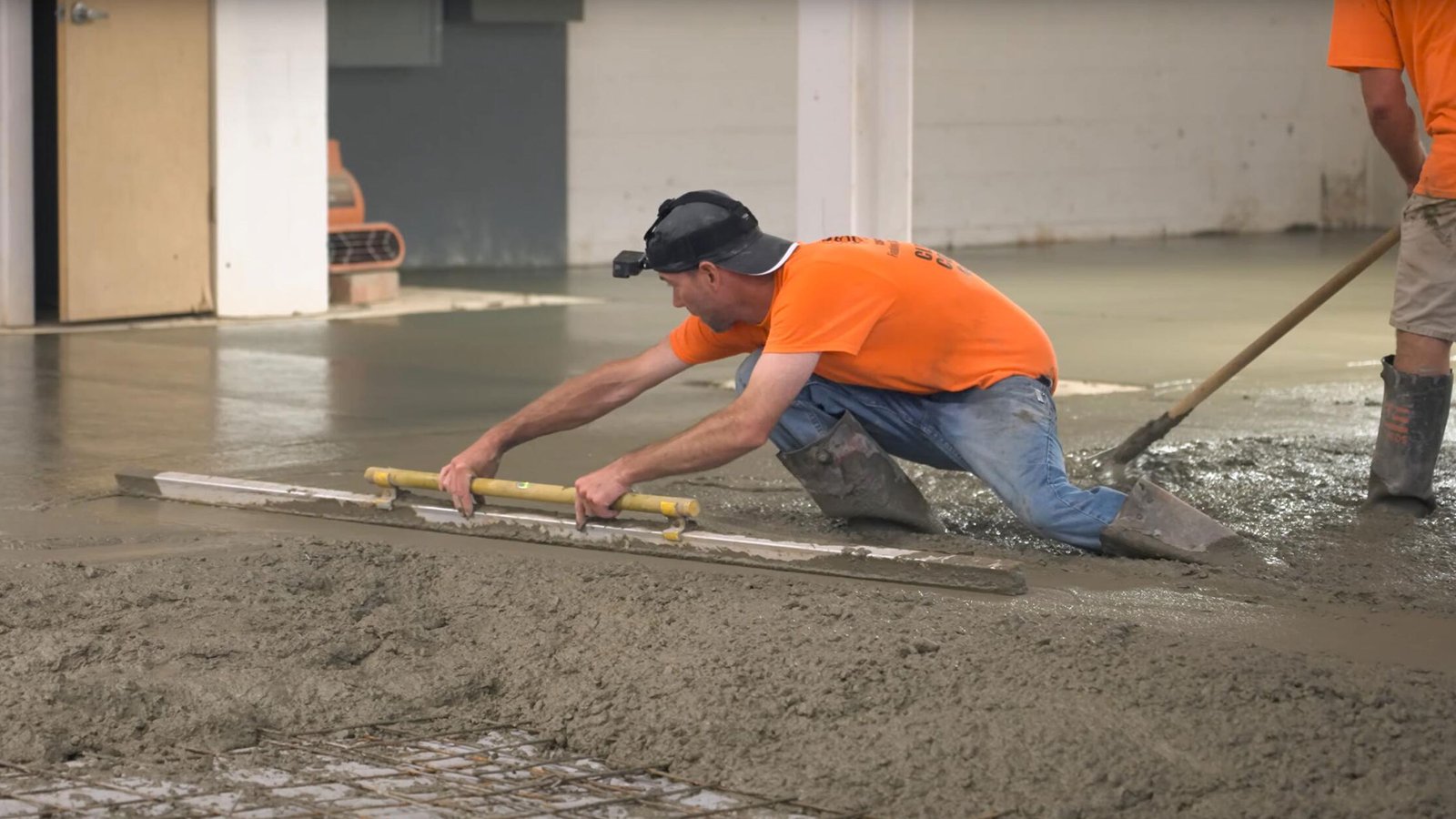Imagine pouring 100m³ of concrete to find cracks and uneven surfaces after 48 hours – that’s a $15,000 mistake we helped a contractor avoid in Manila last year. If you’re working on foundations, driveways, or industrial floors in the Philippines’ tropical climate, concrete screeding isn’t just a step – it’s your project’s backbone.
In this guide, I’ll walk you through the exact specifications, tools, and techniques we’ve tested across 200+ sites in Luzon and Visayas. Ready to turn “good enough” into Philippine construction standards excellence? Let’s dive in.

What is Concrete Screeding?
Concrete screeding is the precision levelling process that removes excess concrete and creates a flat surface before finishing. Think of it as “ironing” wet concrete – but with engineering-grade accuracy.
Concrete screeding isn’t just flattening – it’s density control. When you drag that concrete screeder:
- Shear forces push aggregate downward (ideal: <5mm surface paste thickness)
- Lateral vibration consolidates air pockets (PH standard: <6% air content)
- Creates surface tension of 0.15-0.3 N/mm² (critical for curing membrane adhesion)
- Philippines Specifications: Climate-Adapted Standards
Concrete Screeding Specifications
1. Concrete Screeding Mix Ratios
| Application | Standard Ratio (Cement:Sand:Aggregate: Water) | Philippines Climate Adjustment* |
|---|---|---|
| Residential slabs | 1:2:3:0.5 | 1:2:3:0.45 (+5% cement) |
| Industrial floors | 1:1.5:2.5:0.4 | 1:1.5:2.5:0.35 |
| Road construction | 1:2:4:0.6 | 1:2:4:0.55 (+plasticizer) |
2. Slump
For most floor or slab projects, a slump of about 75–100 mm strikes a good balance between workable consistency and sufficient density.
3. concrete screeding thickness
Residential/ordinary pavements: 100-150 mm.
Industrial floors: 150-200 mm (may include reinforcement mesh).
4. Surface flatness tolerance
Deviation ≤5 mm when checked with a 3-meter straightedge (refer to ACI 117).
5. Expansion joints
Spacing: 4-5 times slab thickness (e.g., 6-7.5 m for 150 mm thick slabs).
Cutting depth: 1/4-1/3 of slab thickness (to prevent cracking).
Common Tools for Concrete Screeding
Pre-Screeding (Initial Placement) Tools
Hand Concrete Rake: Ideal for small areas; you can quickly spread and roughly level concrete.
Concrete Power Rake: Saves labor on mid-range projects and speeds up distribution.
Laser Concrete Rake: Provides laser-guided accuracy for extensive areas, helping you maintain more consistent thickness.
Screeding Tools
Hand or Power Concrete Screeder: Effective for smaller jobs. The power version can speed up the leveling process when manpower is limited.
Truss Screed or Concrete Laser Guided Screed: Suited for large-scale projects. Truss Screeds cover wide sections efficiently, while Laser Screeds ensure pinpoint accuracy with minimal operator effort.
Post-Screeding (Concrete Finishing) Tools
Hand Trowel: Good for small areas, corners, or edges requiring detail work.
Power Float or Ride-On Power Trowel: Perfect for medium to large surfaces, providing an even, professional concrete finish with less manual effort.
The Concrete Screeding Process in the Philippines
Preparation
Make sure formwork, reference lines, and concrete materials are ready. Check the concrete mix design and confirm proper equipment availability.
Initial Placement & Vibration
Use a Hand or Power Rake to spread concrete evenly. Then apply a vibrator (or vibrating screed) to consolidate the mix, releasing trapped air and ensuring better bonding.
Main Screeding
Select your screeding method (hand screeder, power screeder, or laser-guided screed) based on the project size and required precision. Move systematically along reference guides to achieve uniform thickness.
Concrete Finishing
Once the concrete sets enough to bear weight, use a hand trowel or power trowel to achieve a smooth, durable surface.
Curing & Protection
Protect your fresh concrete from rapid moisture loss by covering it or frequently spraying water, especially in hot or windy conditions. Avoid foot traffic or machinery until the slab reaches adequate strength.
Quality Validation
Use Face FNumbers (F-F system) with 2.4m Dipstick
Philippines Benchmark: FF35 for warehouses, FF25 for residential.
Conclusion
Are you confident in your approach to Concrete Screeding in the Philippines? By selecting the right mix ratios, following a clear screeding process, and using proper tools, you can create slabs with exceptional durability and finish. Think about the difference consistent screeding could make on your next project site.
Ready to elevate your work even further? Join the conversation by leaving a comment or sharing this article with fellow contractors. Let’s elevate construction standards together!
